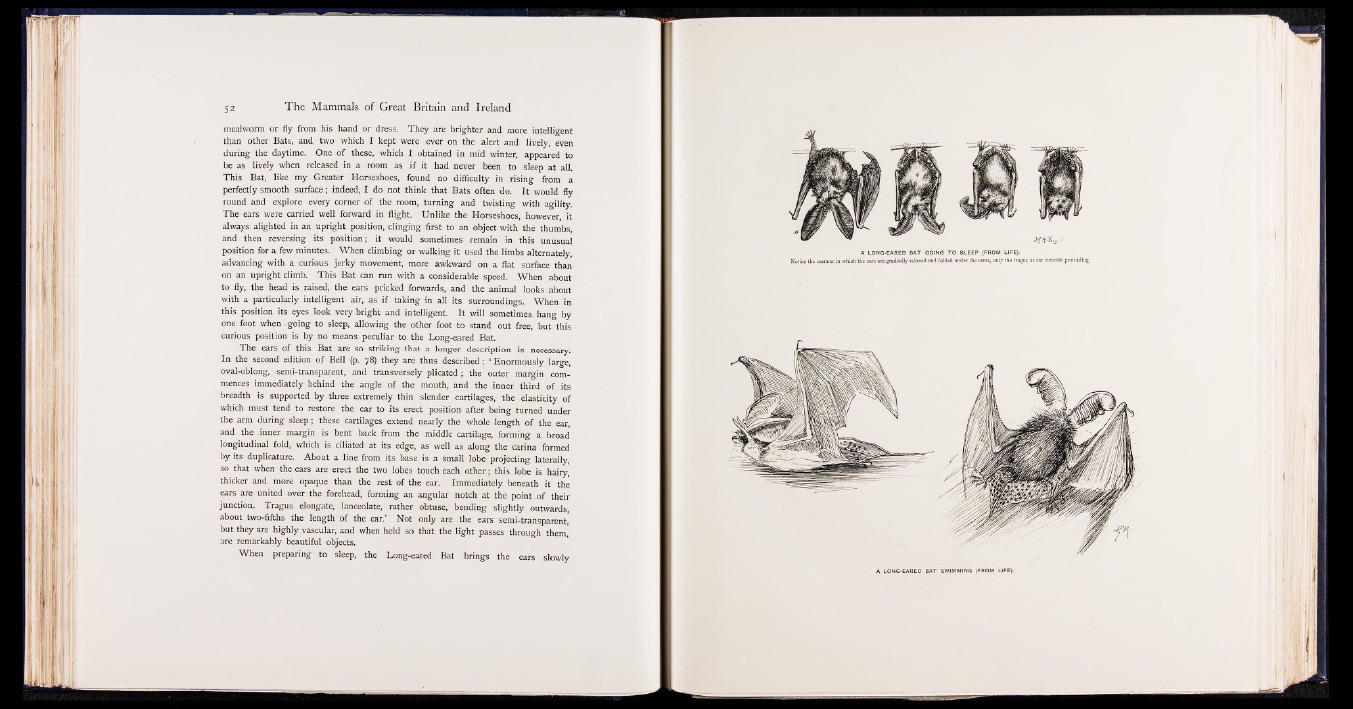
mealworm or fly from his hand or dress. They are brighter and more intelligent
than other Bats, and two which I kept were ever on the alert and lively, even
during the daytime. One of these, which I obtained in mid winter, appeared to
be as lively when released in a room as if it had never been to sleep at all.
This Bat, like my Greater Horseshoes, found no difficulty in rising from a
perfectly smooth surface; indeed, I do not think that Bats often do. It would fly
round and explore every corner of the room, turning and twisting with agility.
The ears were carried well forward in flight. Unlike the Horseshoes, however, it
always alighted in an upright position, clinging first to an object with the thumbs,
and then reversing its position; it would sometimes remain in this unusual
position for a few minutes. When climbing or walking it used the limbs alternately,
advancing with a curious jerky movement, more awkward on a flat surface than
on an upright climb. This Bat can run with a considerable speed. When about
to fly, the head is raised, the ears pricked forwards, and the animal looks about
with a particularly intelligent air, as if taking in all its surroundings. When in
this position its eyes look very bright and intelligent. It will sometimes hang by
one foot when - going to sleep, allowing the other foot to stand out free, but this
curious position is by no means peculiar to the Long-eared Bat.
The ears of this Bat are so striking that a longer description is necessary.
In the second edition of Bell (p. 78) they are thus described: ‘ Enormously large,
oval-oblong, semi-transparent, and transversely plicated; the outer margin commences
immediately behind the angle of the mouth, and the inner third of its
breadth is supported by three extremely thin slender cartilages, the elasticity of
which must tend to restore the ear to its erect position after being turned under
the arm during sleep; these cartilages extend nearly the whole length of the ear,
and the inner, margin is bent back from the middle cartilage, forming a broad
longitudinal fold, which is ciliated at its edge, as well as along the carina formed
by its duplieature. About a line from its base is a small lobe projecting laterally,
so that when the ears are erect the two lobes touch each other; this lobe is hairy,
thicker and more opaque than the rest of the ear. Immediately beneath it the
ears are united over the forehead, forming an angular notch at the point of their
junction. Tragus elongate, lanceolate, rather obtuse, bending slightly outwards, '
about two-fifths the length of the ear.’ Not only are the ears semi-transparent,
but they are highly vascular, and when held so that the light passes through them,
are remarkably beautiful objects.
When preparing to sleep, the Long-eared Bat brings the ears slowly